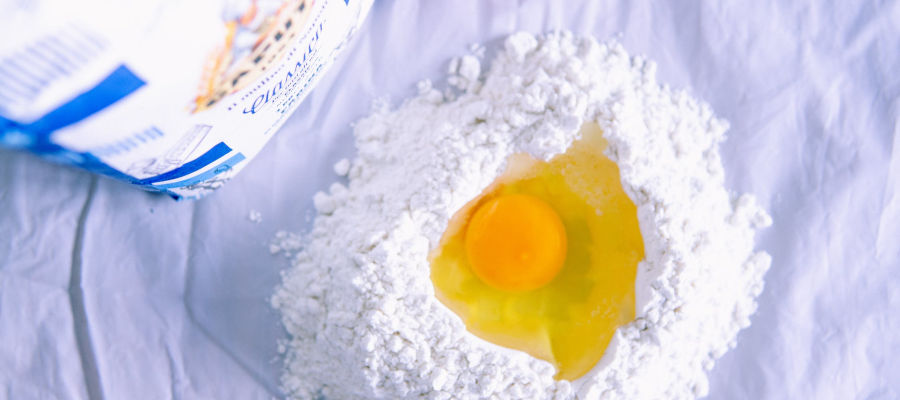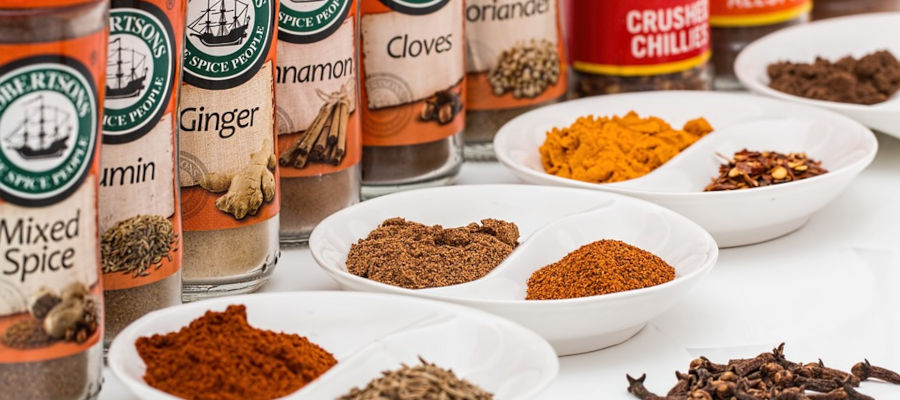The uses of Tapioca flour will shock you. But first, let's talk about its other aspects. Tapioca Flour and starch comes from the cassava root found in the Caribbean and South America. It has many uses. These mixes are a vegan-friendly and gluten-free alternative to standard flour. The flour provides you with the same structure and integrity that normal grain flour adds to baked goods to give you a similar texture and taste as those baked goods. Both have a neutral flavor just like regular flour as well, ensuring that you won't be experiencing any unexpected taste when you bake with it. Alongside baking, the flour is also used in cooking to thicken up soups, sauces, and other foods that need it.
What you should know about tapioca
Originally, tapioca flour refers to a tasteless starch obtained from the roots of the manioc bush. In its raw state, the roots of this spurge plant are poisonous; to make it edible, a complex process is required: after peeling, grating and soaking, the mixture is pressed out and roasted in large ovens. The result is the so-called mandioca flour and as by-product tapioca or tapioca flour.
The starch is not marketed as a fine powder-like other starch, but in flake form or as small, milky pearls. In Asia, tapioca flour is used especially for thickening desserts and soups.
In our country, tapioca flour is known above all as a cult topping off the "bubble tea" to which it gave its name. What bursts so pleasantly on the tongue are tapioca pearls.
Meanwhile, some star cooks also like to use the surprise effect of bursting and spice up with tapioca sauces to noble fish or other gourmet dishes. This is also good for the appearance: the uncooked white tapioca pearls are cooked until they are crystal clear and look a bit like colorless caviar.
Talking about caviar: American celebrity chef Thomas Keller, for example, proves that tapioca is an absolute highlight, even though it is ridiculously cheap. His most famous creation is the noble dish "Oysters and Pearls": a cream with tapioca pearls, poached oysters, and real caviar.
In the domestic kitchen, however, very few people in this country use tapioca flour, but that could change. Because whether flakes or pearls - tapioca is perfect as a binding agent for vegetarian and vegan dishes. Always good for an eye-catcher!
Origin
The original home of the cassava plant from which tapioca flour is made lies in Brazil. There, flour and starch from the roots have had an important meaning as a nutritious basic foodstuff for many centuries. Today tapioca flour and cassava are cultivated all over the world.
Season
There is no special season for tapioca, you can buy tapioca flour all year round.
Taste
Tapioca flour is tasteless and can be flavored with sauces, sweeteners or fruit syrup.
What is tapioca flour?
Tapioca flour is a by-product of the production of manioc flour. It is very fine and has a consistency like wheat flour or icing sugar. It is pure starch and is also called tapioca flour, tapioca flakes, or tapioca starch. Originally, the cassava plant comes from South America, especially Brazil. It now grows in all areas with a tropical or subtropical climate.
Uses of Tapioca Flour
Let's get to the uses of tapioca flour: Many Asian recipes, especially desserts, contain tapioca beads. If you soak them in water, for example, they make a milky rice-like pudding or bubble tea.
In Brazil, you can find tapioca flour in the form of crêpes on the daily menu. These are usually served for breakfast from savory to sweet. The advantage of tapioca flour is that it does not require any fat for frying. The substance reacts with heat and automatically becomes a kind of pancake.
Tapioca flour is gluten-free and neutral in taste. No wonder you find it mostly in gluten-free recipes.
It is also popular as a binding agent for sauces, soups, and desserts. Tapioca is also used as a binding agent in the production of tablets and jelly babies.
Regional alternatives to Tapioca Flour
Even though the uses of tapioca flour are very versatile, you can replace it with other products. If you are paying attention to your ecological footprint, you shouldn't use the cassava root and its flour, because the long transport to Germany already makes tapioca flour a climate sinner. However, the cassava plant does well during periods of drought, which limits its water consumption.
However, this does not mean that there are no alternatives to tapioca flour. Even before the Brazilian root was widespread in our latitudes, grandmothers, and co. I used corn starch or potato starch to thicken their sauces. These are good regional alternatives to tapioca and are also gluten-free.
You can use corn or potato starch to thicken sauces just like tapioca starch. You can also transfer the quantities 1:1. You shouldn't notice any difference in taste, as both tapioca flour and corn and potato starch are tasteless.
However, Brazilian crêpes cannot be made from regional alternatives without further ado. This is because corn or potato starch does not melt when heated in the same way as tapioca flour.
If you do have to use tapioca flour, make sure it's organic. Pesticides are avoided as far as possible in organic farming. Tapioca flour in organic quality is available in organic markets or health food stores. Most Asian shops do not stock organic products
What does tapioca taste like?
Tapioca is a rather neutral-tasting product, which makes it great for putting into just about any food without creating a strange taste that you weren't expecting. Its neutral taste is ideal for baked goods, sauces, and beyond.
How do you eat tapioca flour and starch?

Organic Tapioca Flour from our FoodIndex
The starch, tapioca flour, that is produced from grinding up the pulp is ultra-fine, making it a great substitute for those who have a gluten sensitivity but still want to enjoy flour baked goods. It can also be used to thicken up sauces and pies instead of cornstarch and is able to help make crusts thick and flaky. With the flour and starch mixed together in this way, it makes it thicker and allows you to provide greater levels of structure to your gluten-free foods, helping them become more stable in the way that regular flour is supposed to do. This overall versatile flour is a very useful component to keep in your kitchen.
Is tapioca safe for dietary restrictive lifestyles?
Yes. Because they are taken from a root, tapioca flour and starch are both vegetarian and vegan friendly. This starch and flour is also free from gluten that might irritate someone with sensitivity. Because of this, it opens up a new world of baked goods to those who do not eat normal flour. As you can see, the uses of tapioca flour are also great for dietary restrictive lifestyles.
How healthy is tapioca anyway?
The uses of Tapioca Flour are great for your health. Tapioca cannot be directly described as extremely healthy: Like other starches, tapioca provides a relatively large number of calories and above all carbohydrates For all those who want to lose weight, it is therefore only a limited first choice.
Nevertheless, it would be unfair to describe tapioca as unhealthy. After all, the starch has a high nutritional value, scores with almost 0 grams of fat, and is extremely easy to digest.
For anyone who is allergic or sensitive to gluten, tapioca is a perfect alternative to other starch products.
shopping and kitchen tips for tapioca
Purchasing
You can get tapioca in Asian shops or on the Internet, sometimes also in well-assorted supermarkets.
Storage
Because pearls or flakes attract and absorb moisture from the air almost magnetically, you should keep tapioca airtight and dry after opening the package.
Uses of Tapioca Flour - Preparation
Flakes of tapioca can be easily stirred into the hot or boiling liquid to bind them. If you need the beads for other dishes, cooking is the way to go depending on the size of the tapioca beads, they have to cook in water for about 15 to 20 minutes, stirring constantly, until they become transparent.
Other uses of Tapioca Flour
Not only Veganer can give with Tapioka among other things red fruit jelly, Puddings, jellies, soups, and sauces wonderfully the desired connection.


